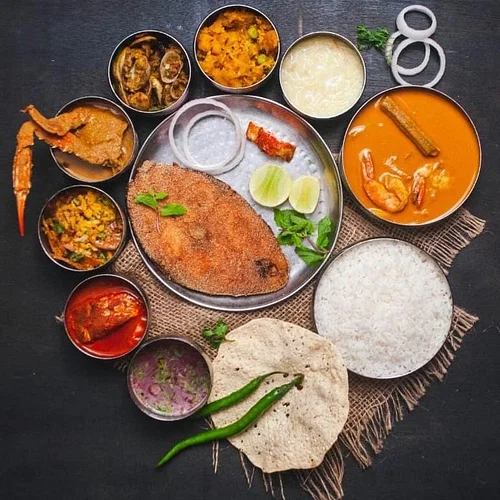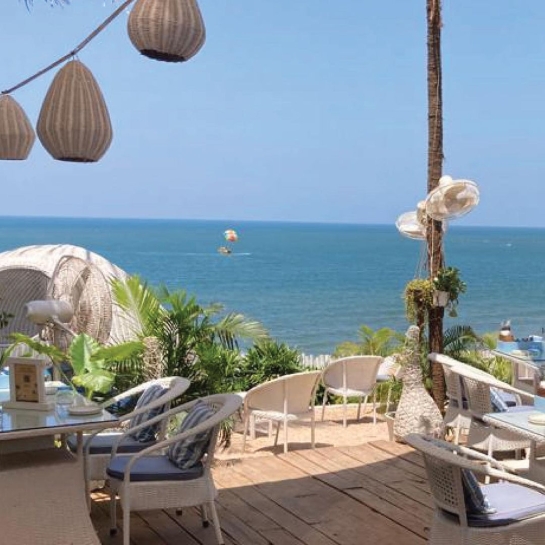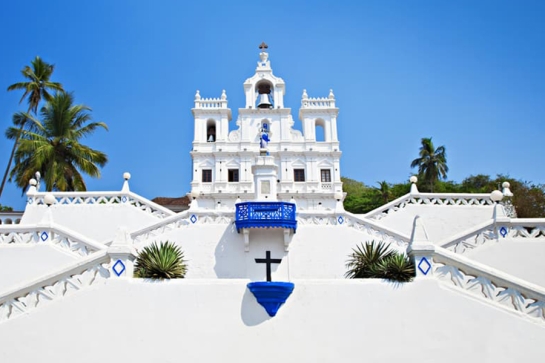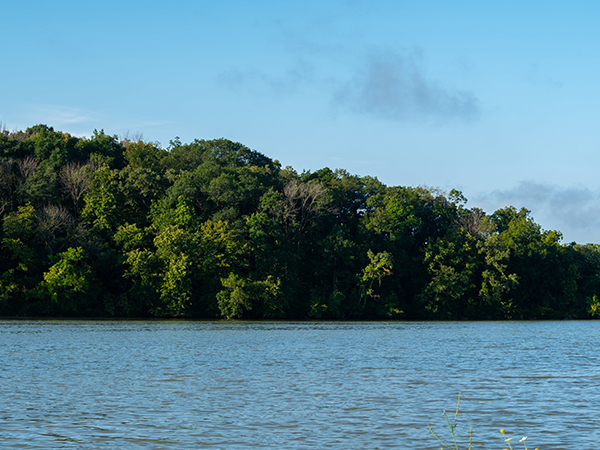‘Susegad’, is a word you don’t just hear but also feel, a word that perhaps best describes the vibe of Goa according to many smitten visitors. This Konkani word, derived from the Portuguese ‘Sossegado’, means tranquil or quiet, but Goan Susegad is beyond just the peacefulness. It alludes to a laid-back attitude, a sense of contentment, a certain joie de vivre. While the picturesque landscape with its beguiling beaches, vibrant culture, and flavourful cuisine beckons everyone, it is this Susegad that is the main attraction and compels people to return.
Goa was under the reign of the Portuguese for over 4 centuries, and the indelible mark they left can be seen in almost every pocket of this state. It is a fascinating blend of Indian and Portuguese influences in its food, architecture, and culture. The result of this intermingling has morphed the state into a place of major attraction for foreign hippies and rave-goers. Goa had its moment with the bohemian aesthetic and the hippie culture in the 1960s, vestiges of which remain strong and intact even today. Think of it as India’s very own ‘Happy Place’. Residents from across the globe now flock to this sliver of a coastal area to really just party very hard or, in some cases, find their raison d'être.
Goa has garnered significant acclaim in that sense, particularly in the post-pandemic era. As the world paused, and we as a society began to reflect more internally, a huge cohort of individuals seeking refuge from the frenetic pace of modern life emerged. As remote work made working from anywhere possible, Goa, with its natural beauty, interesting culture, and cuisine, popped up as a top contender. Over the years, the state has transformed into an exciting global community driven by enterprising business folk, which includes both locals and Indians from various other states seeking an escape from urban monotony, as well as immigrants from around the world. They often venture into unconventional businesses and experiment with creative concepts. The culturally diverse population in Goa is nothing but a melting pot of opportunities to connect with like-minded individuals and exchange ideas – there is quite a lot happening under the Goan Sun.
Goa truly offers the whole gamut; it has something for everyone. There is North Goa where party animals herd towards Anjuna, water sports enthusiasts head to Mandrem or Morjim, food and nightlife lovers enjoy Calangute and Baga, beach yoga enthusiasts visit Assagao and Arambol, and those seeking solitude escape to Querim (Keri). In stark contrast, the South of Goa offers a quieter experience. Colva and Benaulim are top picks for people in that area, and in addition, Palolem is an ideal destination for swimming and kayaking due to its crescent shape. Agonda is family-friendly and offers dolphin-spotting opportunities, and Galgibaga is a nesting site for olive ridley sea turtles (November to April). However, life isn’t just about the sun and the sand in Goa.
There is also a Christian influence in Goa, as a quarter of its population is of the Christian faith. The heritage is evident with numerous churches and cathedrals spread throughout the state. The famous ones include the grand Basilica of Bom Jesus, housing the tomb of St. Francis Xavier and the Sé Cathedral, one of Asia's largest churches. Panaji, the capital city, boasts local markets, art boutiques, backstreet bars, and floating casinos on the Mandovi River. There is also a charming Latin Quarter of Fontainhas with colourful houses, cafes, art galleries, and shops. These are just two streaks in the multi-cultural fabric of Goa. The spiritual experience offered by Goa far extends beyond Christian and foreign influence to further accommodate other religions as well. A prime example of this is the historically and architecturally rich temples of Goa. Dedicated to the worship of ‘Panchayatan’- Devi, Lord Ganesha, Lord Rudra, Lord Keshava and Lord Aditya these temples were built in the unique Nagara style of architecture. A shining example in this domain is the Brahma temple located in Goa in Nagargao in Valopi, where thousands flock every year as it is probably one of the only worshipping sites for the Hindu God of Brahma.
All of this keeps the vacation interesting and spirited, but as the holiday phase wanes, those looking for a permanent settlement to never end the quest for life can stay back. Again, Goa has that covered. Vagator, Mandrem, Morjim, and Reis Magos, with their proximity to commercial beaches and restaurants, are a great pick for anyone looking for a social scene. These locales really represent the heartbeat of Goa’s celebratory lifestyle. For those yearning for a deeper connection with nature and oneself, Goa has quaint villages like Pernem, Moira, and Olaulim. Homes and apartments here are purchased by people with the will to establish a lasting balance of work and play in life. All this is made even easier by the convenient and well-connected transportation options to Goa. Major metropolitan cities like Delhi, Mumbai, and Bangalore are just a plane ride away, but there are also other alternatives to trains and buses. Once in Goa, the best way to navigate the area is by renting a bicycle, scooter, motorcycle, or car and taxi.
Holiday homes, apartments, and villas in Goa not only offer a coastal paradise but also a veritable feast of experiences for every palette. For the adventurous spirit, there are hidden gems such as lesser-known beaches and cascading waterfalls. For the party person, there are plenty of choices of fun and entertainment that come with the gift of kaleidoscopic memories. And for the earthier individuals, there is the laid-back coastal lifestyle. Goa is the smallest state in the country, but it packs a lot of punch. It is truly said that the biggest surprises come in the smallest packages. One can see this phrase personified in India’s Goa.



